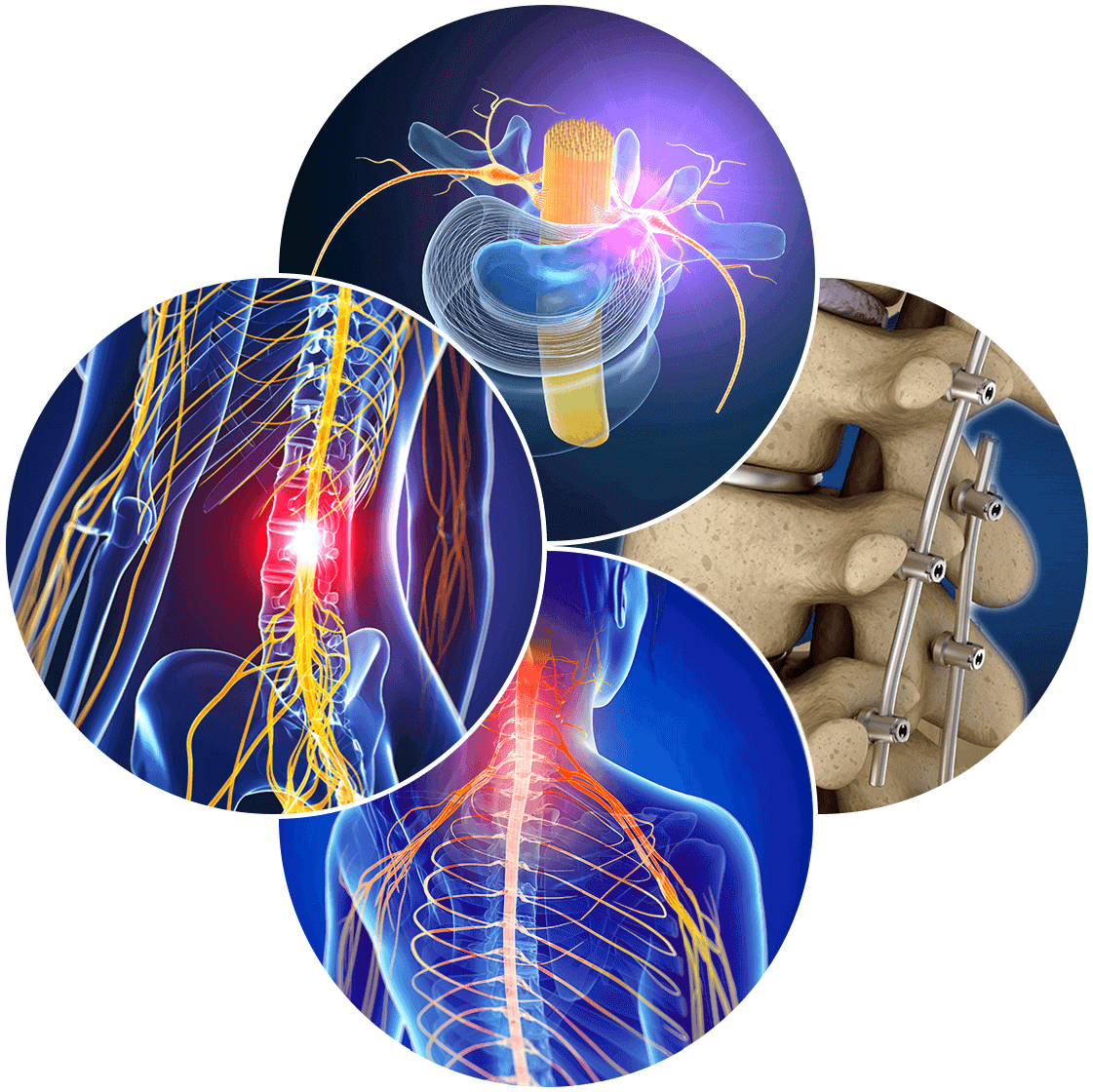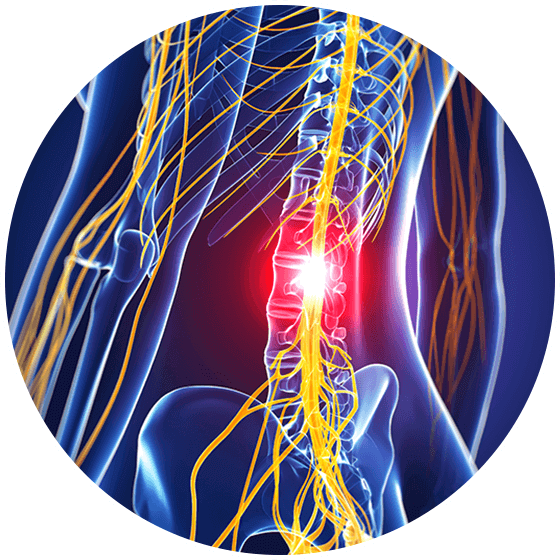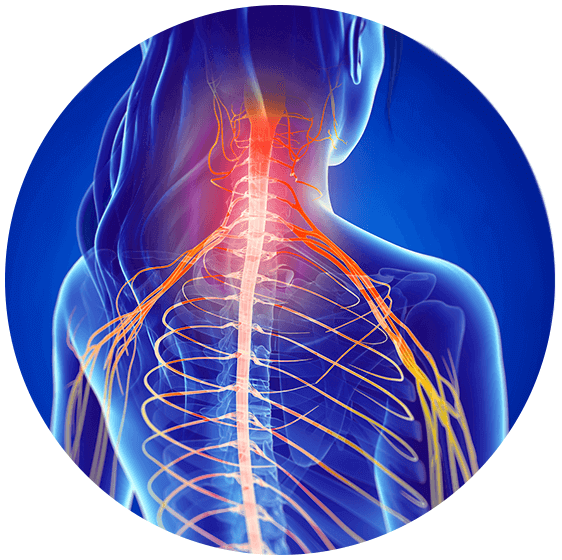Spinal Cord Stimulator

What is a Spinal Cord Stimulator?
Spinal cord stimulation (SCS) is a treatment method that doctors use for patients with chronic pain symptoms. For SCS, doctors insert a pulse generator into the body that emits electrical signals to the spinal cord. Essentially, the device functions very similarly to a pacemaker for the spine. This low-voltage electric current then blocks unwanted pain signals, resulting in symptom relief. As far as chronic pain conditions go, SCS is one of the most common treatment techniques that doctors use for back pain relief. In fact, roughly 50,000 patients receive the same treatment or similar neurotransmitters for pain globally each year.
While SCS does treat chronic pain syndromes, it is not necessarily a cure for the problem. The goal of an SCS is to nullify pain symptoms through interference, not to address the root cause. Because of the nature of the treatment, different patients will receive different levels of relief for their respective symptoms. In the best case scenarios, an SCS may reduce pain levels in patients by up to 75%. It is still important to note, however, that even a small amount of pain reduction in these cases will make a significant impact in the lives of patients. Neurostimulator devices such as these may not work 100% of the time, but luckily there is no risk of damage to the spinal cord or nerves in such scenarios.
Spinal Cord Stimulator (SCS) Device Types
SCS devices are classified into three different types: conventional, radiofrequency, and rechargeable systems.
- Conventional: This type of system is the least intrusive and demands little to no effort on the patient for maintenance. When the power source runs out on a conventional system, a surgeon must replace it surgically. That being said, the procedure that accomplishes this is relatively minor.
- Radiofrequency: Radiofrequency systems are the most heavy duty and arguably the most intrusive, relatively speaking. These systems are designed to provide SCS therapy over a long period of time at high-output levels. Naturally, only more serious cases of chronic pain require this type of device. Because this device has such a high power output, the patient will need to wear an external power source while undergoing this form of SCS therapy.
- Rechargeable: This system is a recent development in SCS technology. While not as intrusive as radiofrequency systems, however, the patient is responsible for recharging the device’s power. As expected, rechargeable systems last longer than conventional systems, which means fewer procedures. However, because batteries wear out over time, rechargeable devices eventually need to be replaced as well.
Though these types of systems all have their differences, there are three key aspects that all device types share. For one, all SCS devices come with a remote control that turns the system on and off and adjusts the settings. Secondly, they are all powered by some sort of battery. Lastly, they all deliver their electrical signals to the spinal cord via lead wires and electrodes.
A general list of minimally invasive procedure advantages are as follows:
Smaller incisions (less scarring)
Outpatient basis (quicker recovery)
Usually not as risky as open procedures (fewer complications)
Less painful than traditional surgery (both during and after)
Less injury to surrounding tissues (muscles heal very slowly)
Advantages of a Spinal Cord Stimulator (SCS)
For patients with chronic pain, sometimes more conservative methods are not enough to treat the condition. In such cases, surgical methods are the next step. Surgical procedures can be divided into two broad categories: they range from being minimally invasive to open or traditional. Minimally invasive surgeries (like SCS) have natural benefits tied to them.
All of that being said, minimally invasive procedures are not for everyone. For some cases, they are simply not a viable treatment route. In other cases, a doctor may have to perform multiple procedures if the minimally invasive surgery is not a success. Like all surgical procedures, complications such as excessive bleeding, infection, and allergic reactions can occasionally occur.
Potential benefits specifically tied to SCS include:
- Better spinal functionality
- Improved mobility
- Reduced pain (less need for opioids and other medications)
- Eliminates brace dependency to a degree
- Improved mood
- Return to a normal sleep schedule
Benefits of SCS–and any surgical procedure for that matter–will depend on the individual. The most important thing to remember is that SCS helps to reduce pain, but it does not eliminate it. In other words, SCS is an effective treatment, but not a permanent cure.
Eligibility Requirements for a Spinal Cord Stimulator (SCS)
Before any surgical procedure, a doctor must perform an evaluation of the patient’s physical condition. Additionally, the patient will need to provide information such as medication regimens, pain history, and medical history. Because chronic pain often leads to emotional problems, it may also be necessary for a psychologist to perform an evaluation.
Medical experts generally define chronic pain as any pain that lasts for longer than 3 months. If conservative treatments do not provide ample alleviation, then the patient may be eligible for an SCS. It is important to note that spine-associated pain is more complicated than it may seem. The pain does not necessarily have to occur in the lower back in order for a patient to be eligible. For example, in cases of sciatic nerve inflammation, the patient may feel chronic pain in the leg. These patients are just as eligible for an SCS as those with lower back pain.
Other factors for SCS eligibility include:
- The patient has no pre-existing medical conditions that would interfere with the SCS
- The patient does not need additional surgery
- The condition causing the pain is treatable
- The patient does not currently have untreated depression
- The patient does not currently have untreated drug addiction
- Successful SCS implantation has already been performed
Do you have chronic pain that prevents you from functioning in your daily life? Have more conservative treatment methods not given you the relief you need? If so, please contact us at 973-791-4101 for a consultation. Our doctors are highly-trained spine specialists who will ensure that you receive the treatment you need for your case.


